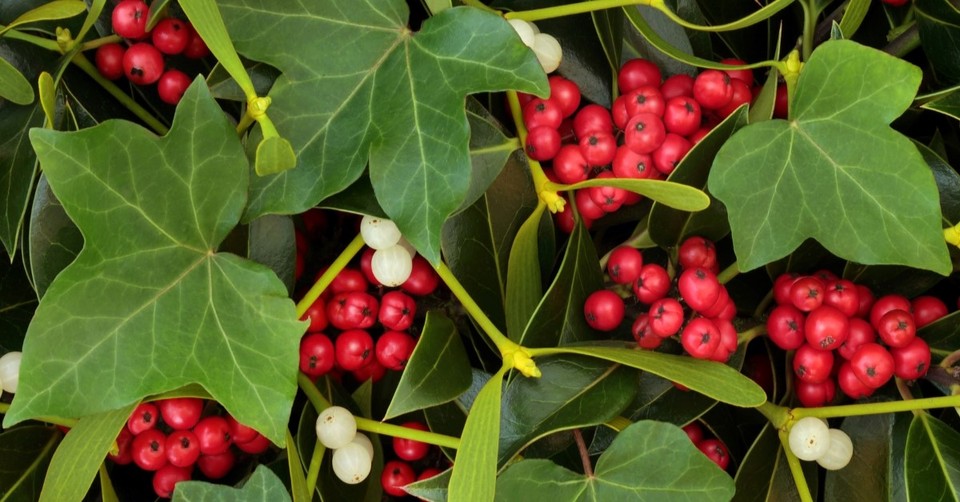Why Has the Hymn 'The Holly and the Ivy' Lasted So Long?

Why has “The Holly and the Ivy” lasted so long? Why does any Christmas song last? It combines a tune that sticks in your mind with words that resonate with your spirit. There are a lot of catchy tunes that turn into earworms that drive you crazy, but most are full of silly but harmless lyrics and are just for a bit of fun. Most of them don’t stand the test of history. However, a Christmas song that has a meaning that connects to people’s hearts will carry on to new generations.
“The Holly and the Ivy” has both a catchy tune and a depth of meaning, which has given it longevity. The tune has the rocking rhythm of an English folk ballad, but the lyrics’ use of contrasting elements makes it something worth investigating further. Let’s look at what makes this hymn a Christmas staple.
Who Wrote “The Holly and the Ivy”?
The name of the composer of the hymn is unknown, but it is believed to have been handed down through oral tradition, which originated in England. Cecil Sharp reportedly transcribed the modern lyrics in 1909 after hearing someone sing it at a market in Gloucestershire:
The holly and the ivy
when they are both full grown,
of all the trees that are in the wood
the holly bears the crown.
Refrain:
The rising of the sun
and the running of the deer,
the playing of the merry organ,
sweet singing in the choir.
2 The holly bears a blossom,
white as the lily flower,
and Mary bore sweet Jesus Christ,
to be our sweet Saviour. [Refrain]
3 The holly bears a berry,
as red as any blood,
and Mary bore sweet Jesus Christ
to do poor sinners good. [Refrain]
4 The holly bears a prickle,
as sharp as any thorn,
and Mary bore sweet Jesus Christ
on Christmas day in the morn. [Refrain]
5 The holly bears a bark,
as bitter as any gall,
and Mary bore sweet Jesus Christ
for to redeem us all. [Refrain]
6 The holly and the ivy,
when they are both full grown,
of all the trees that are in the wood
The holly bears the crown. [Refrain]
Who Recorded “The Holly and the Ivy”?
The first recording of the hymn is traced back to the early nineteenth century. Many recordings have been made since then, but one of the most popular was by the English band Steeleye Span.
To hear a classic rendition of the song, check out this Godtube.com article.
Are there Christian References in “The Holly and the Ivy”?
“The Holly and the Ivy” is a hymn, so there are Christian references. The recurring phrase is about Mary giving birth to Jesus, who would save us all. The song uses four aspects of the holly to represent the crucifixion of Jesus Christ:
- The white blossom represents Christ’s purity.
- The red berry represents Christ’s blood.
- The prickle of the leaf represents the crown of thorns.
- The bark represents the gall given to Christ just before he died.
The ivy, on the other hand, represents the birth of Christ as both the arrival of Jesus into the world as a human being and his eventual overcoming of death through his resurrection. Just like ivy clings to the wall, Jesus came to earth to connect with humanity and eventually reconcile man to God through that connection.
How Did Holly and Ivy Become Christmas Symbols?
Both the holly and the ivy were pre-Christian pagan symbols of hope; however, the use of evergreens as decoration during Advent was a symbol of new life through Christ, even in the darkness of winter. The hymn takes the symbolism deeper by using contrasting elements to show the suffering on the cross and the hope of new life through salvation. For further reading on the symbols used during Advent, check out the Crosswalk.com “Advent in Church and Cultural Tradition” by Bobby Gross.
Is it a Problem that “The Holly and Ivy” Uses Symbols for Jesus?
The Bible is the Word of God and is full of His truth through the history of God’s covenant with the Israelites and the new covenant of Christ through the cross. Yet, even Christ used symbolism and parables to teach the truth, as seen throughout the gospels:
- Words: “In the beginning was the Word, and the Word was with God, and the Word was God” (John 1:1).
- Water: “But whosoever drinketh of the water that I shall give him shall never thirst; but the water that I shall give him shall be in him a well of water springing up into everlasting life” (John 4:14).
- Bread: “I am the living bread which came down from heaven: if any man eat of this bread, he shall live for ever: and the bread that I will give is my flesh, which I will give for the life of the world” (John 6:51).
- Light: “Then spake Jesus again unto them, saying, I am the light of the world: he that followeth me shall not walk in darkness, but shall have the light of life” (John 8:12)
For a discussion of the “5 Most Well-Known Christian Symbols,” check out this article by Whitney Hopler.
However, “The Holly and the Ivy” doesn’t use symbols to represent Jesus. It uses the holly to represent Christ’s crucifixion and the ivy to represent His connection to humanity. Using symbols helps us remember important truths using everyday things in the world around us, just as Jesus used them in His ministry to teach the disciples and other followers. Symbols only become problematic when people focus on the symbol instead of what it represents. A cross is only a piece of wood unless it reminds you that Christ died for us.
What Can We Learn from “The Holly and Ivy” Today?
We would all do well to stop occasionally and pay attention to the songs we sing or the symbols we use. Listen to the words, music, and, even more importantly, the message. In the past, I had been listening to a song on the radio, and I suddenly realized that it had a very negative message that went against my Christian beliefs. I had been humming along to the song for years and never noticed. Now, when it comes on, I change the channel or listen to a CD because I don’t want the negative message to influence my mood or my thinking.
The opposite can also be true. Many people say we don’t need old hymns because they are boring. The problem is that we often only pay attention to the music style and possibly the phrasing of a song, but when we sit down and look at the words, we see they are beautiful interpretations of the scripture truths lived out in human lives.
“The Holly and the Ivy” reminds us that even in the darkest winter, there is still hope for spring and new life through Christ. God sent Christ as an innocent baby so that he could reconcile God to man. Christ was crucified and died for our sins, suffering the crown of thorns and being given gall to drink. Christ was resurrected to give hope of eternal life. Even in our darkest moments, there is always hope because of Christ.
Take a moment to read the words:
The holly and the ivy
When they are both full grown,
Of all the trees that are in the wood
The holly bears the crown.
Christ was born as an innocent baby, but when he was fully grown, he bore a crown of thorns on an “Old Rugged Cross” so that I am “Redeemed” by the blood of the lamb, and that is truly “Amazing Grace.” Take a moment, or several, and open an old hymn book. Look past the style of music or language and read the message: the Bible’s good news. It’s a sermon set to music. If we are willing to take the time to listen, we will be blessed by the words of hope they hold.
Photo Credit:©GettyImages/marilyna
Linda Lyle is a writer, teacher, knitter, and unintentional collector of cats. She has written articles for the Alabama Baptist, Open Windows, Refresh, as well as multiple novels and novellas. Her newest book, 5-Minute Prayer Plan for When Life Is Overwhelming, is set to release in October. She spins yarns on her blog The End of My Yarn at lindalyle.com.
This article is part of our larger Christmas and Advent resource library centered around the events leading up to the birth of Jesus Christ. We hope these articles help you understand the meaning and story behind important Christian holidays and dates and encourage you as you take time to reflect on all that God has done for us through His Son, Jesus Christ!
What Is Advent: Meaning, History, and Traditions
Advent Prayers for Friends, Family, and More
What Is an Advent Wreath and How to Use One?
The History of Santa Claus: Origin of St. Nicholas
Christmas Bible Verses & Scripture Story
What is Christmas? True Meaning and Holiday History
Christmas Eve History and Traditions
Why Gold, Frankincense, and Myrrh?
When Was Jesus Born? Why December 25th
Where Was Jesus Born?

Originally published November 01, 2024.





